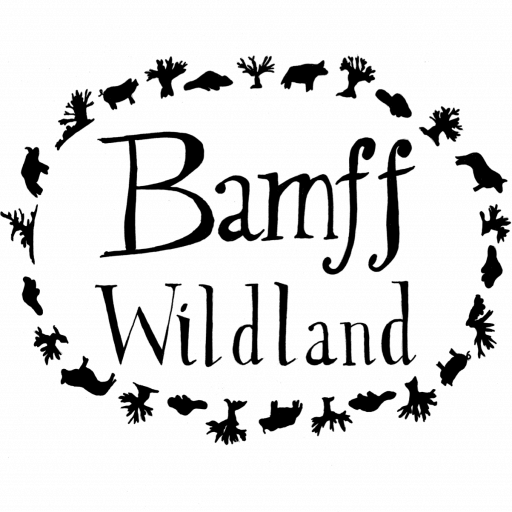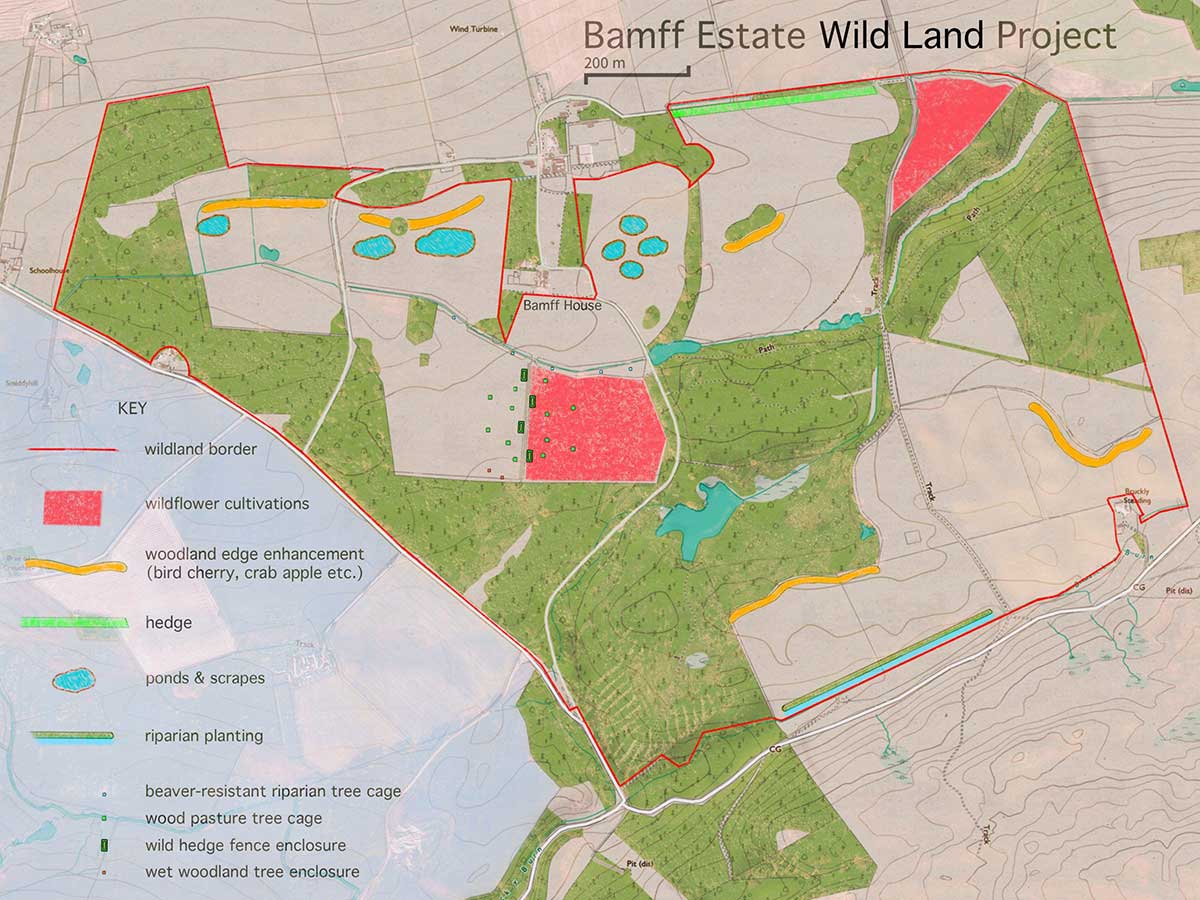Wildland Project
Ecological restoration at Bamff began in the early 1990s with the re-creation of wetlands through reverse drainage schemes and the planting of various native woodlands – from farm woodland schemes on the low ground to native pinewoods on the hill. This was followed in 2002 by the pioneering introduction of beavers.
At the start of the 2020s, we initiated a catalysed rewilding project to create a richly biodiverse area of wild land out of approximately 166 hectares of marginal farmland and plantations.
The Wildland Project area makes up the southern and lowest third of the Bamff estate which lies at around 600 – 700 feet above sea level on the highland edge. Fractures in the highland fault line run through this piece of land and it is mostly undulating or flat. Roughly half of this area is open fields – historically used for sheep pasture or for grazing cattle and to grow fodder crops, whilst the other half remains as woodland of various kinds, mostly plantations, some exotic conifers, some native hardwoods.
The long term aim was to allow all of this land to become self willed – a self regenerating mosaic of dynamically evolving habitats and their associated wildlife species. This happens by putting nature back in charge and ultimately withdrawing the influence of humanity: to rewild.
From the outset, in recognition of the severity of the biodiversity crisis, we began to apply specific targeted actions which are sensitive, appropriate and proportionate to catalyse this processes.
Bamff Wildland Crowdfunder
In spring 2021 we launched a crowdfunding campaign to help fund the major components of Bamff’s ambitious wildland project.
You can donate to the project here.
These actions include:
- Digging ponds and scrapes for wetland birds and other species.
- Planting native trees (oak, hazel, crab apple, holly).
- Planting hedges of thorny scrub (blackthorn, hawthorn, wild rose),
- Planting riparian trees near waterways.
- Planting many acres of wildflowers.
These extend biological corridors and help to inter-connect habitat, improving the breeding and feeding grounds for many native species including, we hope, vulnerable ones, lost to our land in recent years, such as lapwing and curlew.
- Bat houses are being installed across the area to increase bat breeding and survival.
- Hibernacula will be created for a range of species, including bats, hedgehogs and amphibians.
- Invasive non native species are gradually being removed.
- Nesting boxes are being installed for a range of vulnerable birds.
These all give a boost to many struggling native species and increase their chances of survival.
The three beaver families already present on the land have created an extensive area of wetlands, consisting of around fifty dams and pools with their associated fallen and drowned trees, coarse woody debris in the water, and coppiced stems. This has already begun the process of catalysing the rewilding of this land in the riparian zone.
Many wetland species have already benefitted from this and every year more new species appear in the riparian zone and beyond. Common species also occur in ever greater abundance.
As an important first step, sheep were removed at the end of 2020. Subsequently 2021 became a fallow year, with no herbivores present other than wild deer. Since early 2022, the land has been fenced around the perimeter to enable low level conservation grazing by cattle, ponies and pigs across the whole contiguous area (their introduction begins later in 2022).
Cattle, ponies and pigs are descended from native species and have grazing, browsing and rootling patterns that bring many benefits in low densities. A similar approach has been undertaken at the Knepp Estate in Sussex where it has been shown that by introducing a grazing regime that mimics primitive ecological relationships between herbivores and the landscape, it enhances and maintains dynamic natural processes. This can lead to a boom in many species, including rarities, some entirely unanticipated.




